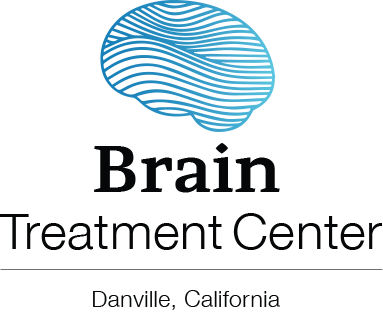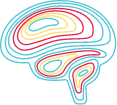
PTSD
A New Approach to Treating PTSD
Post-traumatic Stress Disorder (PTSD) is often misunderstood by friends and family members who haven’t ever experienced it — and can feel extremely isolating.
Common symptoms of PTSD include:
- Terror
- Uncontrolled rage
- Negative outlook
- Insomnia
- Night terrors
- Flashbacks
- Severe anxiety/panic attacks
- Depression
- Inability to cope with stress
- Inability to function normally in day-to-day life
- Avoidance of people, events, or places that remind you of the event(s)
- Self-destructive behavior
- Hopelessness
- Feeling numb
- Easily startled
- Mental and physical reactions to loud noises
- Thoughts of suicide
- Suicide attempts
Post-Traumatic Stress Disorder or PTSD can be a life-altering mental health problem. It is caused by experiencing or witnessing terrifying events, violence, or going through extended periods of extreme stress.
For most people who go through a traumatic event, there is a coping or grieving period that occurs afterward. And the majority usually recover with time. However, other people will have symptoms that get much worse and can last for extended periods of time.
The onset of symptoms can occur right after the traumatic incident or can appear many years later, such as in child abuse cases. Additionally, PTSD can be severe enough to disrupt someone’s life completely and make it difficult to function normally. Research shows that every year, about 3.6% of adults are diagnosed with PTSD, which suggests that this is a growing problem.
It was absolutely terrifying to not know what was wrong with me or how to fix the problem. BTC not only identified the deteriorated state of my brainwave activity, they restored its function… I consider the healing I experienced at BTC to be nothing short of a miracle.” – US Army Veteran
The Brain Treatment Center Can Help You With Your PTSD
Patients suffering from PTSD have markers that are visible in their EEG studies.
New research is confirming that factors that may contribute to PTSD cause changes in brain function. These changes can include the altered activity of certain neural circuits in the brain.
Due to this, patients with PTSD have markers that can be clearly seen in EEG studies. In many cases, PTSD will manifest as the result of a disruption in the front of the brain. Specifically, it is commonplace to see two competing alpha frequencies in the frontal lobe and slow rolling waveforms (delta & theta waves) drowning out what should be a single strong alpha frequency.
We work to identify these disruptions and strengthen healthy brainwave activity to reduce the symptoms of PTSD for the patient.
Of all my injuries, by far the worst were the ones you could not see. I had degraded to the point of not being able to leave my home because of panic attacks and severe anxiety. I could not hide from this feeling, and no medication could numb it. My doctor told me at one point I couldn’t kill myself because I have a family with young children that I am responsible for. It was a life of despair and physical pain every day without reprieve, that is, until I was able to get treatment. For two months, I underwent neural restorative therapy with total symptom resolution. I can function again at work, and can spend much needed time with my family. I have my sense of well-being back and a clarity of thought I haven’t had in many years.” – Army Veteran
If you are interested in learning more about MeRT as a treatment for PTSD, you don’t have to decide anything right away.
MeRT
Here at Brain Treatment Center in Danville, we offer MeRT for PTSD. This is a unique version of TMS (Transcranial Magnetic Stimulation), with a far more individualized approach to brain modulation. We tailor treatment to the patient’s needs based on frequency, location, and magnetic power used. TMS modulates the brain’s electrical activity by using magnetic fields which pass through the scalp from an electromagnetic coil. This process is non-invasive and painless. Research studies show that this type of treatment is promising for PTSD.
Most TMS treatments deliver stimulation to one area of the brain at a fixed frequency for all patients. MeRT, however, is more evolved. We carefully analyze a patient’s initial testing as to the brain’s pattern of function and activity. We then use this information to devise a highly personalized protocol for each patient, with the purpose of encouraging improved brain communication. Patients have indicated that they have experienced significant clinical improvements.*
Treatment for PTSD usually lasts four to eight weeks, but can be ongoing. Appointments are 30 to 45 minutes long, Monday through Friday. Generally, the patient will begin to notice improvements during the first week.
While the FDA has cleared the equipment used for MeRT in the treatment of depression that has been resistant to medications, it may also be used off-label for other disorders in the practice of medicine.
Studies have shown altered brain wave oscillations in patients suffering from conditions such as Major Depressive Disorder (MDD), Autism, Traumatic Brain Injury (TBI), Post-Traumatic Stress Disorder (PTSD), Anxiety, and more. MeRT treatment protocol uses a magnetic field to balance and stimulate brain function. The technology involves using sophisticated diagnostics and imaging to customize the treatment for each individual. We then tailor a personalized protocol based on the location, frequency, and amount of power used by the magnet, specific to each person’s unique condition. As a result, MeRT can improve brain communication and synchronization and can lead to significant and long-lasting improvements.
Much of the initial MeRT research has been done by the U.S. Department of Defense for veterans returning from combat. There is an article that was published in Defense One that further explains the DOD’s research and the benefits that MeRT has been shown to have on people suffering from TBI, PTSD, and MDD. Additional studies have been completed in the private sector on other conditions.
MeRT Treatment for PTSD: What to Expect
For the initial analysis, you will come in for a comprehensive testing appointment. We will gather your new patient paperwork and then our neuro technician will perform a qEEG and EKG, which will enable us to identify any dysfunction or communication problems in your brain.
This appointment usually takes about 45 minutes. Should you decide to proceed with treatment, we will schedule your assessment period. Your second appointment is also 45 minutes long. During this time, you will meet with a provider for a clinical evaluation. The provider will answer any questions you may have and discuss your applicable treatment plan.
Assessment Period
The assessment period of treatment lasts for two weeks, and will help you, and us, determine how you are responding to treatment. At the end of the assessment period, we will perform a second qEEG to note any changes occurring in your brain.
The first week will be Monday through Friday, and the second week, Monday through Thursday, nine sessions in total, followed by a repeat qEEG to determine progress.
Continuing Treatment
Once the assessment period is complete, and we are seeing progress both clinically and on the qEEG, we will schedule subsequent two-week treatment periods.
The comparison between the initial and second qEEG/clinical evaluation will determine if you are responding. You should also start to experience changes in the way you are feeling during this time. We highly advise a total of six weeks of treatment (which includes the assessment period) for optimal and long-lasting results.
Since each brain is unique, the protocol will be different for each patient as it is based on specific qEEG/EKG data from your brain, and the specific condition being treated. Generally, the results of treatment can last a lifetime, though some people prefer occasional follow-up treatment as needed. But each person is different, and protocols may vary. Your provider will have regularly scheduled follow-up EEGs and meet with you to gauge your progress.
Additional Information
A typical treatment session takes about 45 minutes. You will sit in a chair while the neuro technician administers the treatment near the scalp via a magnetic coil. The gentle magnetic impulses are delivered for six to eight seconds each minute. You may feel a slight sensation while the treatment is occurring, but it is not painful or uncomfortable.
Please note that results and improvements are based on active and strict observation of our regimens. Results may vary based on the individual users and are not guaranteed. Additionally, the results of therapy can vary per individual. In general, the longer the length of MeRT therapy, the longer the changes remain.


